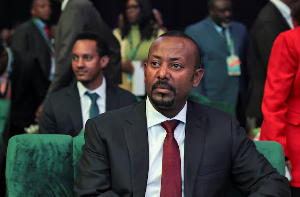With protests growing against government’s plans for the use of private pension funds to recapitalize five indigenous banks which the Bank of Ghana has assessed as solvent and well managed, government is faced with the possibility of banking sector restructuring rising even further above what it budgeted.
So far, government has issued bonds to the tune of GHc11.303 billion to bridge the capital deficits of the nine indigenous banks that the BoG has liquidated to date in order for them to be absorbed under purchase and assumption agreement – two of them by GCB Bank and the other seven by the newly created Consolidated Bank.
Instructively, this already exceeds the GHc 11.25 billion in bonds that government is issuing on the domestic money and capital markets for the first quarter of 2019.
Of that total amount to be raised for the first quarter 2019, GHc 10,149.84 million will be used to refinance maturing debt while the other GHc 1,100.16 million will comprise new debt used to finance government’s operations.
The new debt will form part of the GHc 4,787.8 million in domestic financing of government’s projected fiscal deficit for 2019, targeted at 4.2 percent of the (rebased) Gross Domestic Product (GDP). However, new developments indicate that the ongoing restructuring of the banking sector may force government into a higher fiscal deficit for the year than it had anticipated in its 2019 budget.
There are two threats in this regard. One is the possibility that private pension funds will not agree to put up all the GHc2 billion needed by the five banks – Agricultural Development Bank, National Investment Bank, Sahel Sahara/Omni Bank, Prudential Bank and Universal Merchant Bank. Since the first three are primarily government owned, if the Ghana Amalgamated Trust initiative fails to deliver all the money needed it would behoove government itself to recapitalize its own banks, a situation it is trying to avoid in the first place by designing the GAT financing solution.
The other threat is that it might not recover as much as it expected from the non-performing, yet possibly recoverable assets of the banks that it issued bonds on behalf of, to ensure their smooth transformation into Consolidated Bank Ghana without the loss of depositor’s funds.
Instructively, a report issued by the BoG this week on the findings of the receiver for five of the banks indicates that the true value of the assets not used to establish CBG could be less than half of their erstwhile book value.
This situation is likely to be replicated with the other four banks whose doubtful assets were not passed on to the acquiring banks under purchase and assumption agreements and thus are with receivers charged with responsibility for recovering as much value as possible from them for government.
According to the 2019 budget, about GHC 9.9 billion was issued by government to cover the bail out of the seven failed banks, liquidated in 2018.
About GHC 7.6 billion was issued to cater for the bad assets and liabilities of the five banks that were consolidated earlier, namely, The Royal Bank, UniBank, Beige Bank, Sovereign Bank, and Construction Bank.
Subsequently, Heritage and Premium banks were the next to be consolidated, as about GHC 1.403 billion in bonds were raised to cover the gap.
Earlier, the collapse of UT and Capital Banks and their subsequent takeover by the GCB Bank cost government over GHC 2 billion to clear the combined capital deficit of the two banks and thus ensure the safety of depositors funds.
Government had budgeted 1.9 percent of Gross Domestic Product (prior to rebasing) to finance its closure of failing banks which amounts to GHc4 billion and even this was to require deficit financing. This means government has already spent some GHc7 billion more than it budgeted, which is supposed to be recovered from the liquidation of bank assets now with receivers.
But government is now faced with the prospect of having to spend even more on recapitalizing its own banks even as expected recoveries from the nine liquidated banks are likely to fall well short of anticipated, judging from the receivership report the BoG released earlier this week.
Business News of Saturday, 26 January 2019
Source: goldstreetbusiness.com













